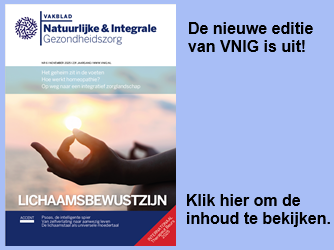Astaxanthine, de roze ontstekingsremmer

Door: Han Siem
Astaxanthine is een natuurlijk carotenoïde pigment dat niet alleen mariene organismen hun rozerode kleur geeft, maar dat ook tal van medicinale toepassingen kent. Veelbelovend is de recente vaststelling dat astaxanthine het immuunsysteem kan versterken en de extreme ontstekingsreactie verminderen die tot ernstige ademhalingscomplicaties leidt bij Covid-19. De bijwerkingen zijn gering en de interacties overzienbaar.
Het xanthofyl astaxanthine is een relatief onbekend carotenoïde dat wordt gemaakt door plankton, algen en sommige planten, schimmels en bacteriën om zich te weren tegen de schadelijke effecten van zonlicht en zuurstof. De concentratie astaxanthine is 1 tot 5% in microalgen. Een portie van vier ons gekweekte Atlantische zalm bevat ongeveer 0,5 tot 1,1 mg astaxanthine.
Oraal wordt astaxanthine opgenomen in de darmen. Omdat het echter een sterk lipofiele verbinding is, heeft het een lage biologische beschikbaarheid. Die kan toenemen als de stof wordt ingekapseld in een op lipiden gebaseerde formatie. Ook kan de opname van astaxanthine toenemen na inname van een vooral vetrijke maaltijd. Neem astaxanthine dus bij voorkeur in tijdens het diner.
Dieronderzoek toont aan dat astaxanthine bij orale inname grotendeels wordt verdeeld over spier- en hartweefsel. Het wordt onder meer geslikt voor leeftijdgebonden maculaire degeneratie, de ziekte van Alzheimer en Parkinson en vermindering van oxidatieve stress. Ook gebruikt men het om de trainingsprestaties te verbeteren en om spierpijn en -beschadiging, veroorzaakt door inspanning te verminderen. Astaxanthine wordt ook oraal gebruikt om zonnebrand te voorkomen1 en bij mannelijke onvruchtbaarheid, symptomen van de menopauze en reumatoïde artritis.
Lees het gehele artikel vanaf pagina 10 in OrthoFyto 5/20.
- Ito, N., Seki, S., & Ueda, F. The protective role of astaxanthin for UV-induced skin deterioration in healthy people—a randomized, double-blind, placebo-controlled trial. Nutrients, 2018 10(7).
- Fakhri S, Nouri Z, Moradi SZ, Farzaei MH. Astaxanthin, COVID‐19 and immune response: Focus on oxidative stress, apoptosis and autophagy. Phytotherapy Research.2020 ptr.6797.
- Jyonouchi H, Sun S, Tomita Y, et al. Astaxathin, a carotenoid without vitamin A activity, augments antibody responses in cultures including T-helper cell clones and suboptimal doses of antigen. J Nutr 1995;125:2483-92
- Chew BP, Wong MW, Park JS, et al. Dietary beta-carotene and astaxanthin but not canthaxanthin stimulate splenocyte function in mice. Anticancer Res 1999;19;5223-8.
- Lee SJ et al. Astaxanthin inhibits nitric oxide production and inflammatory gene expression by suppressing I(kappa)B kinase-dependent NF-kappaB activation. Mol Cells. 2003;16(1):97-105.
- Li W et al. Alpha-tocopherol and astaxanthin decrease macrophage infiltration, apoptosis and vulnerability in atheroma of hyperlipidaemic rabbits. J Mol Cell Cardiol. 2004;37(5):969-78.
- Park JS, Chyun JH, Kim YK, Line LL, Chew BP. Astaxanthin decreased oxidative stress and inflammation and enhanced immune response in humans. Nutr Metab (Lond) 2010;7:188.
- Xia W, Tang N, Kord-Varkaneh H, Low TY, Tan SC, Wu X, Zhu, Y. The effects of astaxanthin supplementation on obesity, blood pressure, CRP, glycemic biomarkers, and lipid profile: A meta-analysis of randomized controlled trials. Pharmacological Research,2020 161, 105113.
- Kudo Y et al. Effects of astaxanthin on brain damage due to ischemia. Carotenoid Science. 2002;5:25.
- Nir Y et al. Effect of an astaxanthin containing product on rheumatoid arthritis. J Am Coll Nutr. 2002;21(5):490.
- Wu T et al. Astaxanthin protects against oxidative stress and calcium-induced porcine lens protein degradation. J. Agric. Food Chem. 2006;54:2418−2423.
- Tso MO et al. Method of retarding and ameliorating central nervous system and eye damage. US Patent 5,527,533 (1996).
- Miyawaki H, Takahashi J, Tsukahara H et al. Effects of astaxanthin on human blood rheology. Journal of Clinical Therapeutics & Medicines. 2005;21(4):421-429.
- The Natural Standard Astaxanthine
- Naguib Y, Antioxidant activities of astaxanthin and related carotenoids. J Agric Food Chem. 2000;48:1150-4.
- Spiller GA et al. Safety of an astaxanthin-rich Haematococcus pluvialis algal extract: a randomized clinical trial. J Med Food. 2003;6:51-6.
- Choi HD, Youn YK, Shin WG. Positive effects of astaxanthin on lipid profiles and oxidative stress in overweight subjects. Plant Foods Hum Nutr. 2011;66:363-369.
- Kupcinskas L, Lafolie P, Lignell A, et al. Efficacy of the natural antioxidant astaxanthin in the treatment of functional dyspepsia in patients with or without Helicobacter pylori infection: A prospective, randomized, double blind, and placebo-controlled study. Phytomedicine. 2008;15:391-99.
- Kistler A et al. Metabolism and CYP-inducer properties of astaxanthin in man and primary human hepatocytes. Arch Toxicol. 2002;75(11-12):665-75.
- Siem H, Interacties tussen reguliere en complementaire medicatie synergie of tegenwerking? OrthoFyto 2016 (5)
- Kistler A, Liechti H, Pichard L, Wolz E, Oesterhelt G, Hayes A, Maurel P. Metabolism and CYP-inducer properties of astaxanthin in man and primary human hepatocytes. Arch.Toxicol. 2002;75(11-12):665-675
- Siem H. Tamoxifen en kruiden. Orthofyto. 2019 (3)
Bronvermelding:
Bronvermelding:

Han Siem
is complementair werkend apotheker bij de Huizer Apotheek, DeVitamineapotheek.nl en het Integraal Medisch Centrum Amsterdam. Hij is gespecialiseerd in interacties tussen reguliere en complementaire medicatie.

